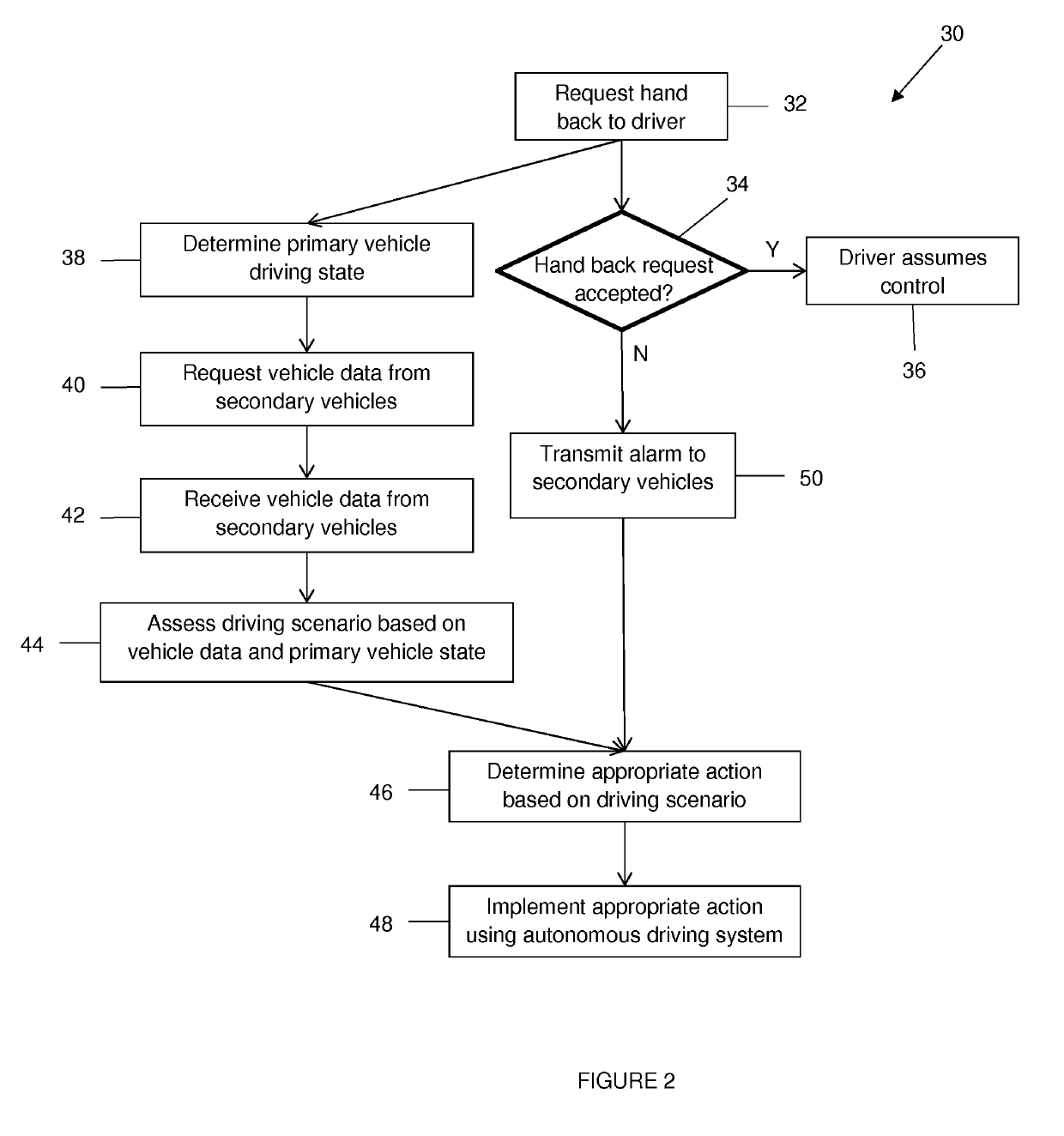Control of an autonomous vehicle
a technology of autonomous vehicles and control systems, applied in position/direction control, external condition input parameters, instruments, etc., can solve problems such as inability of the driving system to sense its surroundings, requests are not responded to, and the system is not capable, so as to minimise the number of secondary vehicles, minimise the effect of latency
- Summary
- Abstract
- Description
- Claims
- Application Information
AI Technical Summary
Benefits of technology
Problems solved by technology
Method used
Image
Examples
Embodiment Construction
[0037]FIG. 1 shows a typical driving situation on a section of dual-carriageway motorway 10 as an example of a scenario in which methods according to embodiments of the invention may be applied. It should be appreciated, however, that the present invention is not limited to motorway driving, and may find application in all kinds of driving scenarios.
[0038]In the example shown in FIG. 1, the section of motorway 10 includes a pair of two-lane carriageways 12 that are separated by a central reservation 14. Three vehicles occupy the carriageway 12 shown lowermost in FIG. 1, and a fourth vehicle travels in the opposite direction on the uppermost carriageway 12. FIG. 1 also shows a smart gantry 16 spanning the motorway 10.
[0039]The vehicle of interest, hereafter referred to as the primary vehicle 18, is the middle vehicle of the three travelling on the lower carriageway 12. The primary vehicle 18 is a BASt level 3 autonomous vehicle having an automated driving system 20, whereas the other...
PUM
 Login to View More
Login to View More Abstract
Description
Claims
Application Information
 Login to View More
Login to View More - R&D
- Intellectual Property
- Life Sciences
- Materials
- Tech Scout
- Unparalleled Data Quality
- Higher Quality Content
- 60% Fewer Hallucinations
Browse by: Latest US Patents, China's latest patents, Technical Efficacy Thesaurus, Application Domain, Technology Topic, Popular Technical Reports.
© 2025 PatSnap. All rights reserved.Legal|Privacy policy|Modern Slavery Act Transparency Statement|Sitemap|About US| Contact US: help@patsnap.com



